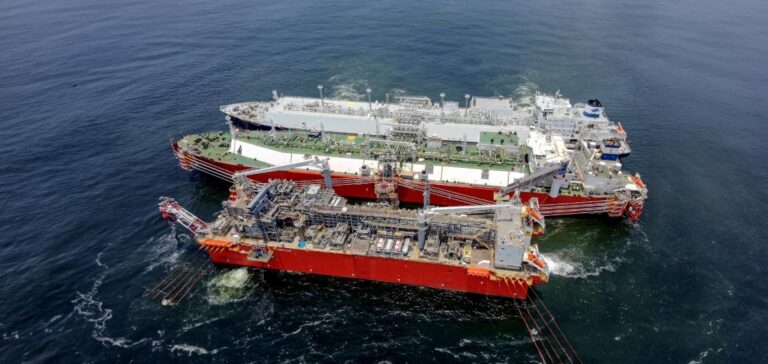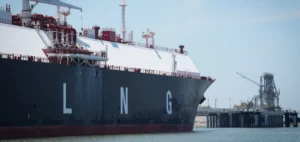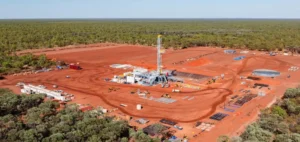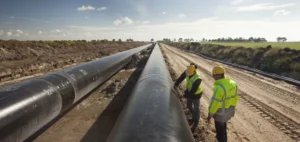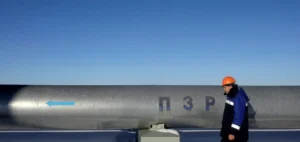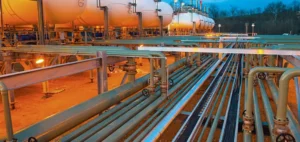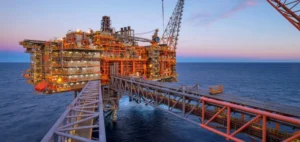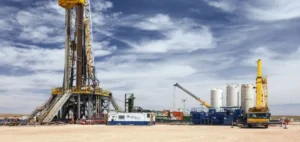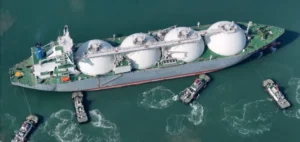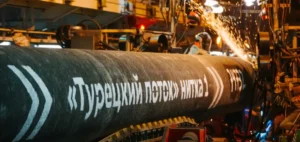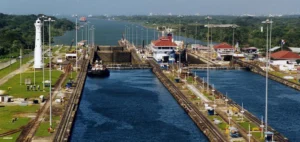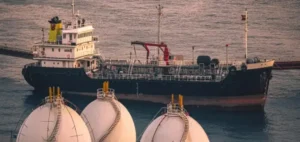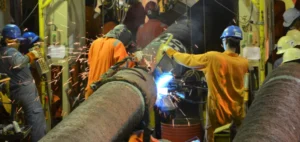The Republic of Congo continues the strategic expansion of its liquefied natural gas (LNG) infrastructure through the Nguya FLNG (Floating Liquefied Natural Gas) project. Currently under construction at the Wison shipyard, located in Nantong, China, this floating unit is designed to significantly boost Congolese production capacities. This installation will complement an existing infrastructure, the Tango FLNG, operational since late 2023, with an annual capacity of 0.6 million tonnes (MTPA). Once deployed, the Nguya platform alone will reach a liquefaction capacity of 2.4 MTPA annually.
Scope of the Nguya FLNG Project
The development of the Nguya FLNG project is part of a global partnership framework involving the Italian company Eni, the Société nationale des pétroles du Congo (SNPC), and Congolese authorities represented by the Ministry of Hydrocarbons. The official launch of the ship’s hull took place last November, attended by Minister Bruno Jean Richard Itoua. This event marked a notable step forward in the project’s realization, considered crucial for the country’s economic and energy diversification. The project specifically involves the development of the offshore Marine XII block, under concession to Eni.
In addition to its high capacity, the Nguya platform integrates advanced offshore liquefaction technology. This feature allows Congo to access broader international markets, where demand for LNG is growing. The scheduled date for the vessel’s departure from China to the Congolese coast is set for September 2025. This ambitious timeline targets rapid entry into production to capitalize on commercial opportunities tied to global LNG demand.
Economic and Industrial Impact
Economically, bringing this unit into operation marks a crucial milestone in optimizing offshore gas resources for the Republic of Congo. This project enables the country to capitalize on its significant gas reserves while increasing its exports to international energy markets. The increased liquefaction capacities are viewed as a fundamental step toward greater independence from revenues traditionally dominated by petroleum hydrocarbons.
From an industrial standpoint, the successful implementation of this offshore infrastructure represents an important precedent for Congo’s gas sector. It offers the country the opportunity to sustainably enter an increasingly competitive global market. Alongside the Tango FLNG, this new platform enhances Congo’s visibility as a major player in the African LNG market, facing already-established producing countries.
Upcoming Challenges and Global LNG Market
As the global LNG industry becomes increasingly competitive, Congo will now need to optimize its commercial and logistical strategies to maximize profits derived from the Nguya FLNG project. The cumulative planned capacity of 3 MTPA for the Congo LNG project will represent a substantial share of the regional market, requiring significant efforts in management, logistics, and international commercialization.
These challenges also entail the necessity for Congo to continue improving its export infrastructure and establish solid commercial partnerships. Thus, the Nguya platform constitutes a central but not singular element of a long-term strategy aimed at sustainably positioning the country in the global LNG market.


